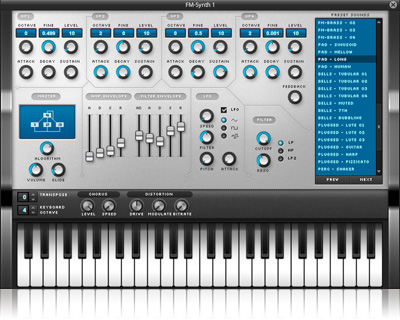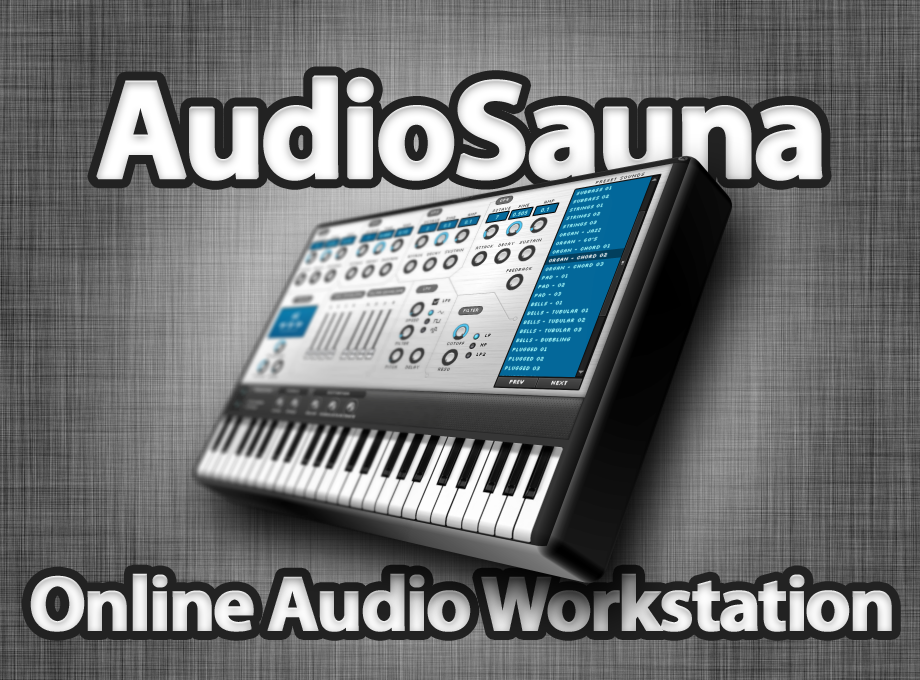


Both the ratio and fixed frequency have separate coarse and fine adjustment. Fixed/ratio mode can be changed only on the OPERATOR views. Operator frequency can be a ratio of the note beign played or fixed freuency. LEVELS and FREQS views: Adjust output levels and frequencies of all operators in one view. Attack, decay and release are durations, so higher attack value means slower attack. Tab 2 is ADSR envelope settings for the entire patch. Glide, when enabled, adds a pitch slide from one note to the next if you play a note before releasing the previous one. High feedback level causes the output to turn into noise, which can also be useful. A number with square around it represents an audible carrier operator, filled octagons are modulators, and arrows show how the operators are routed.įeedback basically lets you morph the operator output waveform between sine and saw (positive fb) or sine and square (negative fb). On tab 1 you can change the algorithm, master volume, feedback level for operator 4 and glide rate.
#AUDIOSAUNA MIDI PATCH#
PATCH view: Common settings for the patch. In the future, support for loading and saving patches from and to SD card could be added. Currently there are only the built-in patches to choose from, but the current patch can be imported and exported as a MIDI SysEx message. This is the only view you need, if you don’t plan to make own custom instruments. Each view has up to four parameters that can be adjusted using the four up and down arrows in the middle.īROWSE view: Browse the preset patches, export current patch and set MIDI channel. The four buttons at lower left and lower right corners are used to switch between different views. Because the synth can only play 4 notes simultaneusly, you might need to manually add small gaps between adjacent notes. Note that MIDI events that happen at the same time are not sent in any particular order, so a note-on message (for next note) might be sent before a note-off (for previous note).
#AUDIOSAUNA MIDI SOFTWARE#
You can also play MIDI tracks on a music software and configure it to send MIDI messages to Pokitto. To use a MIDI keyboard, connect it to the computer and route MIDI messges from the keyboard to Pokitto. MIDI channel on the synth defaults to 1 and can be changed from BROWSE view. It should only take a second or two to establish the connection. USB MIDI connectionįor USB MIDI you need to have Pokitto connected to the computer when the synth starts, and press C when asked to enable USB. You can use this feature to play instruments that have glide enabled, or alternatively use sustain for that. You can move left or right on the keyboard also while holding B, in which case the note keeps playing until you stop at another key and a new note is triggered. Pressing B at any time plays a note, even when the virtual keyboard is hidden.
#AUDIOSAUNA MIDI HOW TO#
uploads/default/original/2X/a/ae47b2d31d72d74ee1aaceeb1a707b81b964760e.mp3 How to use the virtual piano keyboard In this one I played MIDI tracks on LMMS, which is sending MIDI messages to Pokitto. Here’s another sample with different instruments. Such as this theremin tune (couldn’t get audio playthrough to work in Audacity, so I had to record without hearing the sound myself): You can even play simple songs with the virtual keyboard using only two buttons and d-pad. For standalone use there is a virtual piano keyboard, that you can toggle with C button.
#AUDIOSAUNA MIDI CODE#
Source code for a version that works also on simulator: FMSynth-sim.zip (120.1 KB)Ī MIDI keyboard can be used with the synth, but it can also be used without anything connected to Pokitto.


 0 kommentar(er)
0 kommentar(er)
